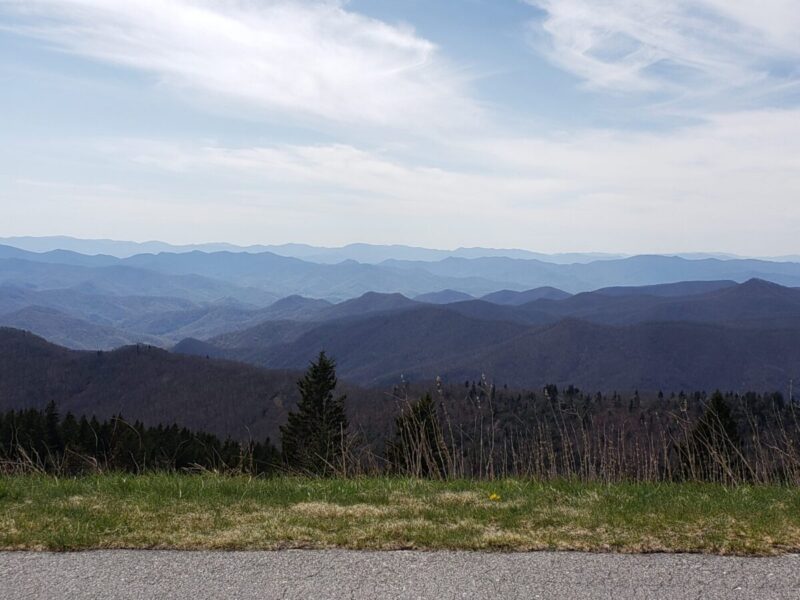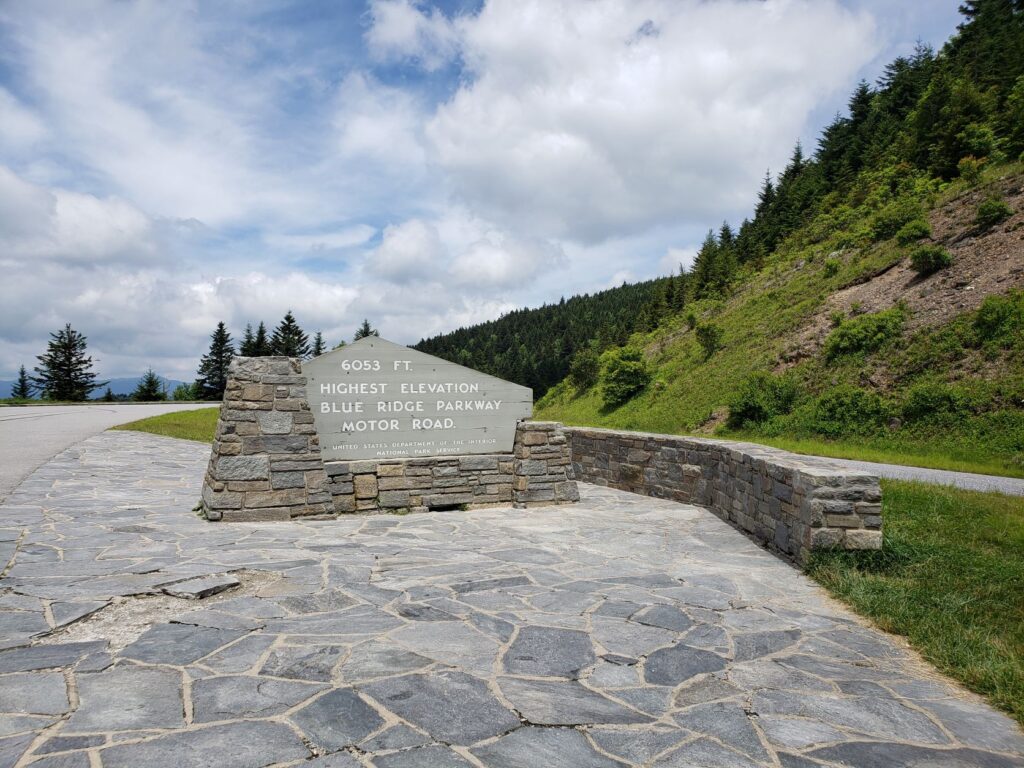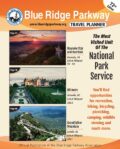
A two-day trip through the Pisgah Region comes with unique rewards. There is a natural resource emphasis that features relic populations of plants and long vistas across rugged and remote wilderness areas. From Mount Mitchell (Milepost 355.3) to places like Craggy Gardens (Milepost 364.3) and Devil’s Courthouse (Milepost 422.2), visitors see sites and facilities that highlight the story of biological diversity as a product of the area’s varied geology and topography. An overnight stay in the Asheville area reveals the charm of the Parkway’s home town. The Folk Art Center (Milepost 382) and Blue Ridge Parkway Visitor Center (Milepost 384) emphasize the craft heritage and the natural, cultural, and recreational resources of the Blue Ridge region.
Day One: Morning
Heading out of Spruce Pine or Little Switzerland in the morning, you will notice the number of tunnels through the rugged mountains of this part of North Carolina. Crabtree Falls Trail (~2.5 miles round trip) is a strenuous hike to one of the Parkway’s best waterfalls. Mount Mitchell State Park is accessed at Milepost 355.3, with a drive up the highest mountain east of the Mississippi at 6,684 feet. At Craggy Gardens (Milepost 364.5), stop at the visitor center for great views and exhibits on the rhododendrons that blanket the mountains here, drawing visitors for generations. A short hike (.3 miles one way) leads to a shelter built by the Civilian Conservation Corps in the early days of Parkway construction.
Day One: Mid-Late Afternoon
In Asheville, visit the Southern Highland Craft Guild’s Folk Art Center (Milepost 382) and the Blue Ridge Parkway Visitor Center with film and exhibits (Milepost 384).
Day One: Late Afternoon – Early Evening
A visit to the 8,000-acre Biltmore Estate is always worth the time. An overnight stay in Asheville will convince any visitor why this mountain city remains a popular tourist destination for well over a century.
Day Two: Morning
Heading South on the Parkway from Asheville, prepare to enjoy “the top” of the Parkway with elevations consistently over 5,000 feet and topping 6,000 feet for a short distance. This is, without a doubt, the place where the Parkway feels the most like wilderness. Arrive at Mount Pisgah (Milepost 407 – 409) for lunch at the picnic area or at Pisgah Inn. If you brought good hiking boots and lots of energy, hike the trail (2.6 miles round trip) to the summit.
Day Two: Mid-Late Afternoon
At Graveyard Fields (Milepost 418.8), or Devil’s Courthouse (Milepost 422.4), stretch your legs by strolling at least part of trails that lead to vistas.

Day Two: Late Afternoon – Early Evening
At Richland Balsam Overlook (Milepost 431.4) the Parkway tops out at 6,053 feet and the marker that signifies the elevation is a popular photo opportunity. The panoramic view at Waterrock Knob (Milepost 451.2) has led to its reputation as the best location anywhere on the Parkway to view sunrises and sunsets. It is less than 20 miles to the end of the Parkway at Cherokee, NC for an evening of dining and experiencing the Native American culture of the Cherokee.

